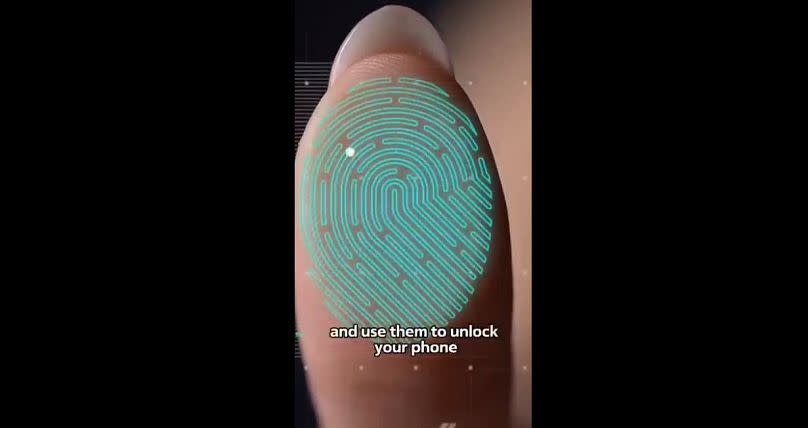The iconic V finger sign, commonly used to represent peace, is often seen when posing for pictures.
However, a video being widely shared on WhatsApp and other social media networks warns people not to use it.
The clip claims that fraudsters can use the images to take high-quality copies of their fingerprints, which they then use to hack into their phones and accounts to steal their money and data.

But what is the basis for the claims?
Simply put, it is technically possible but practically unlikely.
Hackers could theoretically extract copies of our fingerprints from the selfies we post online, but only in very specific conditions, according to Sarah Morris, professor of digital forensics at the University of Southampton.
“We’re talking about the right lighting, the right camera, the right resolution, the right angle of the finger, how close the finger is to the camera,” she told the Cube. “We are talking about very specific conditions here to do that work.”
“With most phones, it’s going to be really hard to get that level of resolution from holding your hand up when you’re pretty far away from the camera,” she said.
Frank Breitinger, associate professor of digital forensic science and investigation at the University of Lausanne, came to a similar conclusion.
“You can get sensitive information from good quality pictures but otherwise it’s difficult,” he said. “Even if you have it, it’s even harder to reuse this data.”
He noted that many social media platforms reduce the quality of photos and video when they go online, which acts as an additional shield to help stop our data from being stolen.
No matter how good the potential hacker’s equipment and technology may be; if there is insufficient data in the data source, the algorithm will not be able to capture enough information to make accurate copies of our fingerprints.
Even where the conditions were perfect for fraudsters, it’s still highly unlikely that they would have the firepower to extract our biometric data from our photos – at least for now.
They would likely use a software-driven platform, and possibly use AI-based technology. It would use an algorithm to extract information from the fingerprints and then turn it into usable biometric data.
“As far as I know, that’s not common software,” Morris said. “It’s certainly not something I’ve come across as a practitioner, and it would be difficult to get hold of, it would be custom made right now.”
However, it is still important to be aware of the potential dangers when we post content online, especially with the rapidly changing AI landscape.
To be fair to the video making the rounds on WhatsApp, he suggests precautions we can take to avoid offending any online hackers, such as showing our fingers clearly in photos and using filters to block any areas sensitive or obscure information.
But Morris said this is not entirely necessary at the moment as the technology to extract our biometrics is not readily available at the moment. Biometric data is usually stored locally, for example on your phone, so hackers would usually also need access to the physical device to gain access.


“Even if you have this fingerprint, you don’t just take this picture and put it in a bank,” Breitinger said. “There is still much more to be done.”
“Let’s say you want to hack into my fingerprint-protected phone: You still need my phone,” he said, explaining that hackers would have to physically replicate the image into something that can be put on their finger
“Most of the sensors are good enough to detect if something is dead,” he said.
To practice good cyber security, experts recommend being aware of the backgrounds and information you might accidentally share in your pictures.
Morris said open source information is a much easier and more widespread way for people to access your data, where people can look at photos and find out where you are and what you’re doing from a street layout on or books or posters in the background. .
“They also give hints about the kinds of things you like that can help remember questions to get into accounts and guess your passwords,” she said.
It’s also a good idea to be more careful about sharing your eyes, or using voice or facial recognition software, according to Breitinger, rather than worrying about fingerprints.
“Fingerprints are still one of the biometric features I trust the most,” he said. “I would be more worried about deepfakes or someone capturing my voice than I would be someone stealing my fingerprint.”
He recommended not sharing high-quality pictures of your magazine online, as well as always making sure to use two-factor authentication to protect your accounts and data.
Long story short, you are probably safe to continue spreading peace and victory in your selfies.